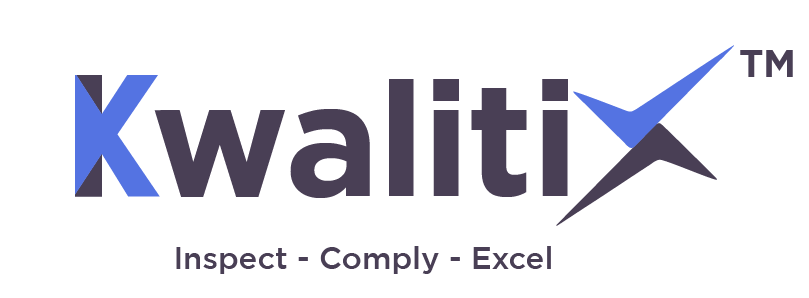Introduction
Inspection vs. Audit, Audits are independent evaluations of a company’s financial statements, operations, and compliance to meet the applicable laws. An audit’s goal is to reassure stakeholders that the organization is conducting its operations securely, effectively, and efficiently.
In an inspection, a company’s operations go under review to determine whether they are in compliance with the applicable laws and regulations. To inspect a facility is to identify potential areas of non-compliance and take action if necessary
Inspections monitor workplace safety while audits examine the management system. Both provide insight into company health and improvement opportunities.

What is Safety Inspection and Audits
Safety Audit refers to examining hazards and looking at your organization’s processes and procedures related to health and safety.
Companies conduct audits to verify compliance with regulatory requirements and analyze the effectiveness of their internal safety programs and policies
Whereas Inspection is kind of similar but different, It is common for inspections to focus on the physical condition of an asset, such as equipment, tools, housekeeping, etc.
“Third-party companies, competent workers, and individuals with past equipment usage experience inspect the equipment.”
Generally, an audit is a specific event with an identifiable date or dates. Most likely, it involves financial issues (but not always).
“An inspection, whether announced or not, may focus on physically inspecting the premises rather than inspecting the ‘books’ and is conducted on a specific date.”
Review, monitoring, and evaluation are some of its ongoing processes. They may cover specific areas of interest or general operations.
So, for example, a safety audit could be conducted to determine whether your organization has effective safety inspection processes. Safety Inspections generally benefit from the eye of someone who is familiar with the workplace, which is why they’re often conducted internally. Safety audits can benefit from an objective outsider’s perspective to look at a program without bias.
They both contribute significantly to workplace safety and have a place in your organization. In either case, you just need to know when to use each and how to make the most of your findings.
Inspection vs. Audit: Understanding the Differences

Inspection and audit, both utilized for quality control purposes:
They have different objectives, While an audit examines quality management systems’ effectiveness, inspection aims to identify non-conformities or defects existing within a particular product or service.
Inspections tend to concentrate on individual elements (especially products or services), while audits are geared toward assessing the overall effectiveness of an organization’s Quality Management System
Inspections occur more frequently than audits do
“At times, even on a weekly basis, these inspections ensure the consistent adherence to high-quality standards; in contrast, audits are performed less frequently (once per year or at a defined frequency) to measure how effectively the chosen Quality Management System helps attain optimal success across various business endeavors.”
Lastly, inspection vs. audit also varies regarding detail level:
Inspectors often engage in intense scrutiny aimed at examining each element that comprises a product/ service at specific stages during production processes. In contrast, the scope of the audit reaches beyond mere inspection, encompassing a comprehensive examination of the quality management system.
This evaluation delves into crucial aspects like documentation, training, and process improvement.
Main focuses of inspection and audit:
Finally, inspection and audit have different main focuses. In contrast, the inspection focuses on identifying defects or non-conformances in the product or service, while the audit focuses on assessing the effectiveness of the quality management system and identifying opportunities for improvement.
Importance of Quality control for businesses
All businesses must maintain Quality Control. It helps us ensure that we meet customer expectations, comply with regulations, and produce products and services safely and efficiently. Inspections and audits are Two crucial tools that businesses can use to set up and maintain efficient quality control systems.
Benefits of inspection for businesses
- Verify that products and services meet customer expectations
- Identify and correct any potential hazards
- Ensure that products and services comply with regulations
- Assess the effectiveness of quality control systems
- Gather data for continuous improvement

Benefits of audit for businesses
- Assess the effectiveness of a business’s quality management system
- Identify any areas where quality control can be improved
- Provide assurance to customers and stakeholders that a business is committed to quality
- Comply with regulatory requirements
Inspection and Audit Best Practices
To ensure that inspections and audits are effective, businesses should follow best practices. These include:
- Adhering to established standards and procedures
- Training and qualifying inspectors and auditors
- Using technology to enhance inspection and audit processes
- Communicating and sharing feedback with employees
Here are some Statistics about it
The federal government of the United States carries out over 100,000 inspections annually.
A product recall typically costs $10 million.
An error in quality control typically costs $200 million.
Successful, client-centered, creative, and sustainable businesses are associated with strong quality control systems
Conclusion
Inspection and audit are two key tools for any enterprise. They ensure that products and services meet client expectations, comply with regulations, and are produced safely and efficiently.” (This sentence is already in active voice.) (This sentence is already in active voice.)By adopting best practices, enterprises can ensure that their inspections and audits are adequate and provide value.

